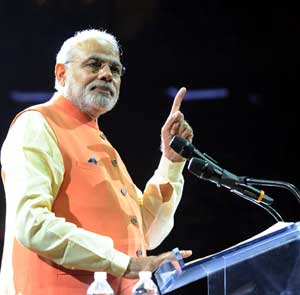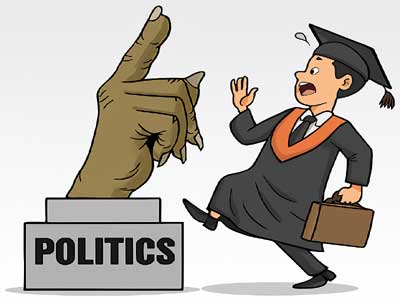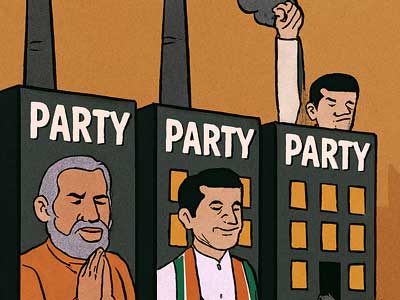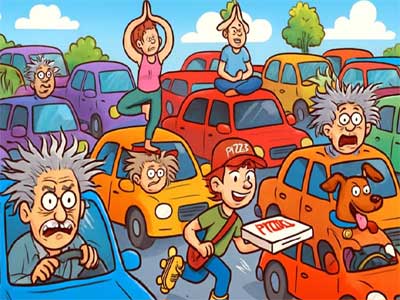Suppose one were to judge the Narendra Modi government solely on statistics, data, and comparative rankings. In that case, the past eleven years might easily be hailed as a golden era in India’s development. No other political system in millennia has offered such a large population hope, support, and opportunity for mainstream inclusion, and not just that.
Wait…! Millions have been lifted beyond the stigma of poverty. Flagship public welfare schemes like Jan Dhan, Housing, Ujjwala, and Ayushman freed millions from deprivation, anchoring them firmly within the nation’s mainstream. But there is another side to this coin. Behind the glare of achievement lies the shadow of neglect.
Read in Hindi: सफर लंबा है और भटकाव भी नहीं है कम...
Forget the rest of India, today, even the nation’s capital, Delhi, is gasping for air. The sky hangs heavy with toxic smoke, the Yamuna has degenerated into an open sewer, streets are scenes of daily tragedy, and justice has become a punchline. By October this year, both Delhi and India find themselves battered, the environment ravaged, cities anguished, crime on the rise, and core institutions helpless. This is the same old India, poisoned air, broken roads, interminable court cases, merely repackaged for the world in gleaming new wrappers.
Delhi’s air stands as the starkest testimony to the BJP government’s failure. In May, the city’s Air Quality Index shot past 500 for the first time, a level labelled ‘severe plus’, where breathing itself is hazardous. Until now, May’s average had never breached 243. The cost every year, around 17,000 Delhiites die purely from toxic air. The Yamuna, once a lifeline, is now a gutter.
Thirty-two years and 8,000 crore rupees later, by 2025, 23 out of 33 CPCB monitoring stations still fail basic water quality standards. The Yamuna is now a ‘dead river’, one in which even fish cannot survive. The story is much the same for the Ganga. The grand ‘Namami Gange’ initiative, launched in 2015 with billions spent, has yielded ‘next to no’ improvement in water quality, as acknowledged by the CAG and Parliament.
In April this year, hundreds of trees were felled illegally inside Dwarka’s National Institute of Immunology. Weeks later, another 7,500 were uprooted for the Delhi-Dehradun Expressway, despite Supreme Court orders to halt. With every fallen tree, Delhi-NCR’s ‘green lungs’ grow more frail.
Noise isn’t far behind as a scourge. By April this year, Delhi’s streets throbbed with 15 million vehicles. Endless traffic jams, encroached bus stops, and poorly conceived flyovers have rendered the city a living nightmare. The result, India is now the world’s ‘road death capital’: in 2023 alone, 480,000 road accidents claimed 172,000 lives; by 2024, fatalities neared 180,000, one every three minutes. In July 2025, the government pushed through 24,000 crore rupees’ worth of flyovers and tunnels, but these are bandages on mortal wounds.
The Smart City Mission, launched with fanfare in 2015, aimed to forge a ‘Model Urban India’ by 2025. Yet just 18 of 100 city projects were completed. CAG reports highlight scandals, delays, and monumental waste. The upshot: cities drown each monsoon, mountains of garbage mushroom, and drains overflow.
Walking the streets has become a hazard. According to NCRB, 6.24 million crimes were registered in 2023, up 7.2 per cent from 2022. That’s one crime every five seconds. Cybercrime alone jumped 31 per cent; crimes against children rose by 9.2 per cent. By 2025, rape and kidnapping cases will still be climbing.
The police are unchanged, brutal and crumbling. Public trust is shattered. Courts, meanwhile, are exhausted and fossilised. Over 50 million cases are pending, a third stuck for over 30 years.
The Ayushman Bharat health scheme, touted as the world’s largest, fell into disgrace in 2025, when 3,104 counterfeit or substandard drugs were seized from the market. Hospitals are notorious for exploitation, fraud, and patient neglect.
Education fares even worse. Public schools are emptying, their children shunted to private ‘factory schools’. By 2025, fees have jumped 169 per cent. Curricula are outdated, teachers are too few, and linguistic politics has turned education into a divisive tool.
In the end, the BJP repeats the Congress’s script, embracing defectors, partnering with adversaries, and discarding principles for power. In the 2024 Lok Sabha elections, nearly a quarter of the BJP’s 441 candidates were defectors, 110 from Congress alone. Whom does this ‘revolving door’ politics of corruption and opportunism empower, if not our leaders themselves?


















Related Items
How political parties became corporates…!
Bihar: In whose favour the political wind blowing…?
Why Indian migrants don't flex their might…!